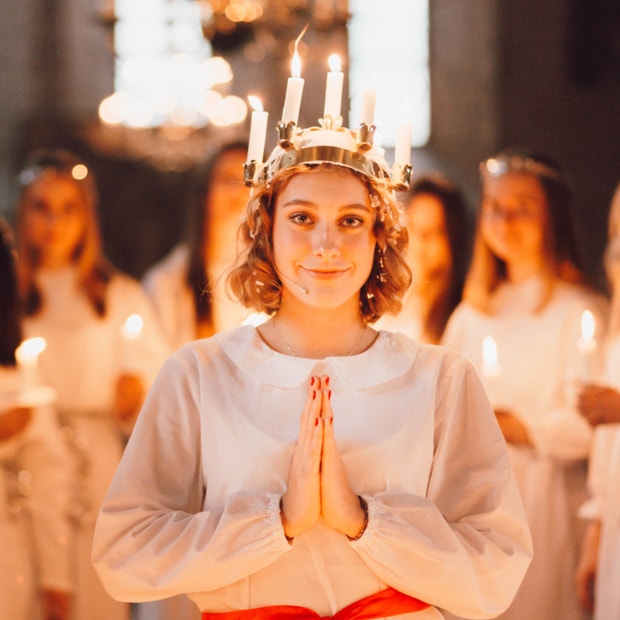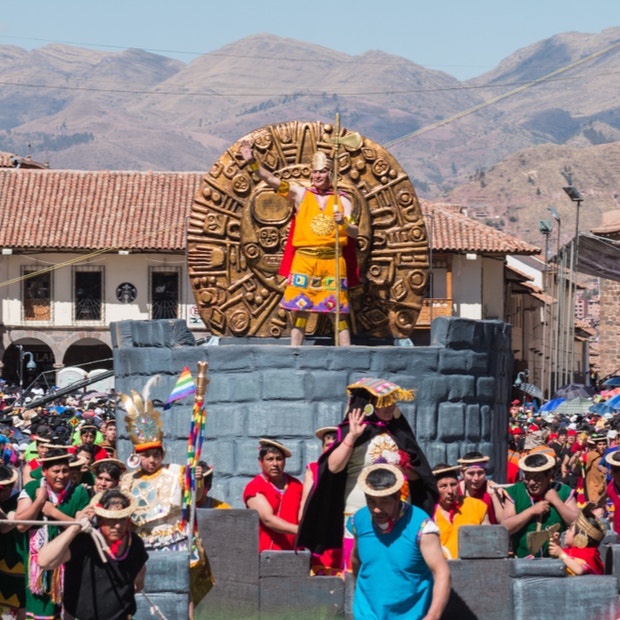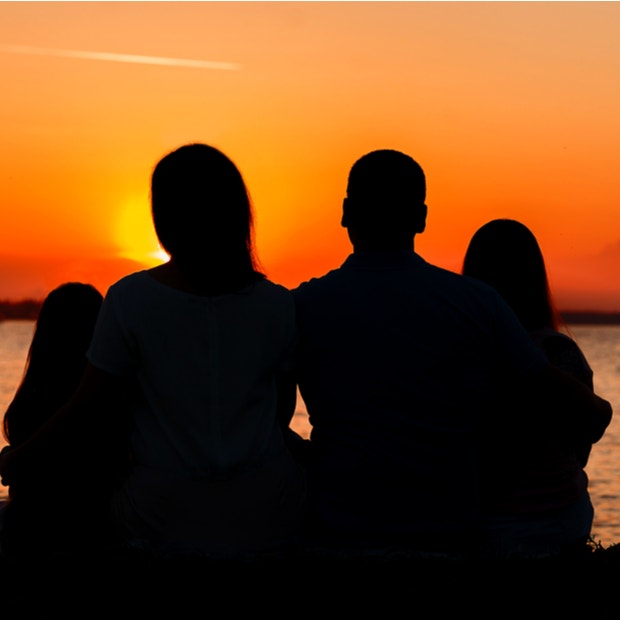How To Celebrate Winter Solstice — Traditions & Rituals For The Shortest Day Of The Year
Let there be light on December 21st.
 getty
getty It might be the shortest day of the year during the busiest time of year, but that doesn’t mean you can’t add these Winter Solstice traditions into your Midwinter. There's holiday gifting, decorations, festivals, and more!
The Winter Solstice falls on December 21 in the Northern Hemisphere. Celebrating it is one of the oldest traditions in the world lasting for thousands of years, dating back to ancient Pagan times of honoring the seasonal change. It's a time to bask in nature and set intentions for the year to come.
What is the Winter Solstice?
The Winter Solstice, or Midwinter, occurs when the Earth’s poles have their maximum tilt away from the Sun.
In the Northern Hemisphere, when the North Pole has tilted away from the Sun, this happens on December 21 or 22. Meanwhile, in the Southern Hemisphere, this occurs on June 21 or 22.
On the Winter Solstice, the Sun sets earlier than any other days of the year, leading to the shortest day and longest night of the year. Since Neolithic times, this phenomenon has been marked with its own set of Winter Solstice celebrations that are designed to embrace the return of the Sun or "birth of the sun".
The holiday season as we know it is influenced by ancient Winter Solstice traditions.
Here is a look at how different cultures and ancient societies celebrate the Winter Solstice around the world, including those in Rome, Iran, Peru, and more.
6 Winter Solstice Traditions From Around the World
1. Yalda
Yalda, or Shab-e Yalda, is an Iranian festival that celebrates the Winter Solstice. It marks the birthday of the Sun goddess Mithra who won out over darkness on this day.
Yalda is a time to gather with friends and family, eat naturally grown fruits and nuts, and make good wishes for the year.
2. Soyal
Soyal is the Winter Solstice tradition of the Zuni Native American people of New Mexico and the Hopi Native American tribe of Arizona.
Rituals on this day include dancing, gift-giving, and purification. These rituals bring the Sun back from its long winter slumber.
3. St. Lucy’s Day
 Photo: Jon Buscall / shutterstock
Photo: Jon Buscall / shutterstock
Also known as Lucia’s Day or the Feast of Saint Lucy, this event is most widely celebrated in Scandanavian countries on December 13.
St. Lucy was one of the earliest Christian martyrs, killed by Romans in 304 CE because of her religious beliefs. To commemorate her, young girls dress up as her and wear wreaths of candles on their heads.
This is intended to symbolize St. Lucy as the bearer of Christ’s light in a world of darkness and is associated with earlier Norse Winter Solstice traditions.
4. Saturnalia
This festival began in Ancient Rome and is probably the origin of modern Christmas.
Traditionally, Saturnalia marked the end of the planting season and invited new growth for the months to come. For days, gifts would be given, games would be played, and those who were enslaved did not have to work.
5. Dong Zhi
In Ancient China, Dong Zhi was considered the arrival of winter.
It's an end-of-year harvest festival that welcomes laborers back from the fields with the fruit of their work. It's celebrated with family gatherings and a large meal, including rice balls, called tang yuan.
6. Inti Raymi
 Photo: Roberto Epifanio / shutterstock
Photo: Roberto Epifanio / shutterstock
This Winter Solstice celebration occurs in June, during the Southern Hemisphere’s Winter Solstice. It's a Peruvian tradition that dates back to the Inca Empire before the arrival of Spanish colonists.
Inti Raymi honors the Sun god and, though it was banned by the Spanish, it was revived in the 20th Century. It's celebrated with traditional dances, feasts, and mock sacrifices.
And of course, if you don’t have Winter Solstice traditions in your culture, or if you are looking for creative ways to celebrate the first day of winter, there are a few ways you can celebrate at home.
5 Winter Solstice Rituals
1. Decorate a Yule Tree.
 Photo: Jacob Lund / shutterstock
Photo: Jacob Lund / shutterstock
If you celebrate Christmas, you’ve probably already decorated your tree by December 21, but it doesn’t hurt to show it some extra love on the Winter Solstice.
Evergreen trees were loved by Pagan society because they symbolized prosperity and life, even in dark winter months. The Winter Solstice is a time to remember that even in the darkest days, there will be light, and yule trees capture this.
If you are decorating a yule tree outside be sure to use natural bird feeders like apple rings, carrots, or pine cones coated in peanut butter and bird seeds.
2. Make a Yule Altar.
Laying yule branches as a bed for winter candles is a way to make your own light on the longest night of the year. The candles provide the light and warmth of the Sun, while the yule leaves symbolize nature’s resilience.
Be careful with this one, as keeping branches near open flames is a fire hazard. That said, burning a yule log or yule tree was also another Nordic Winter Solstice tradition back in the day.
3. Watch the sunrise.
 Photo: Anna Borovska / shutterstock
Photo: Anna Borovska / shutterstock
Since Winter Solstice celebrations are traditionally about reinviting the Sun back into your life, it seems appropriate to get up to welcome the Sun back after the shortest day of the year.
Watch the sunrise outdoors or from your window on the morning of December 22, and allow even the darkest corners of your mind to be filled with light. The good news is, since Winter Solstice still falls in the depths of winter, you won’t have to be up that early!
4. Meditate.
 Photo: ImYanis / shutterstock
Photo: ImYanis / shutterstock
One thing most traditional Winter Solstice celebrations have in common is intention-setting. These rituals are designed to welcome in positivity and light for the year to come.
Taking time to meditate at home or in nature allows you to push any darkness from your mind and fill yourself with the light of the returning Sun.
5. Show some love to nature.
Since we’d be nothing without it, the Winter Solstice is a good time to give back to nature and the natural world.
Pagan people welcomed the Winter Solstice as a time to appreciate the Sun and all it does for their survival.
We can do the same by setting vows to do better for the planet, going out and cleaning up nature, or feeding birds and animals.
Alice Kelly is a writer and storyteller with a passion for lifestyle, entertainment, and trending topics.

